Millets are highly nutritious and resilient crops that thrive in diverse environmental conditions, making them a sustainable and profitable option for farmers. This guide offers practical advice on every aspect of millet farming, from selecting the right variety to managing pests and diseases to marketing and selling your products.
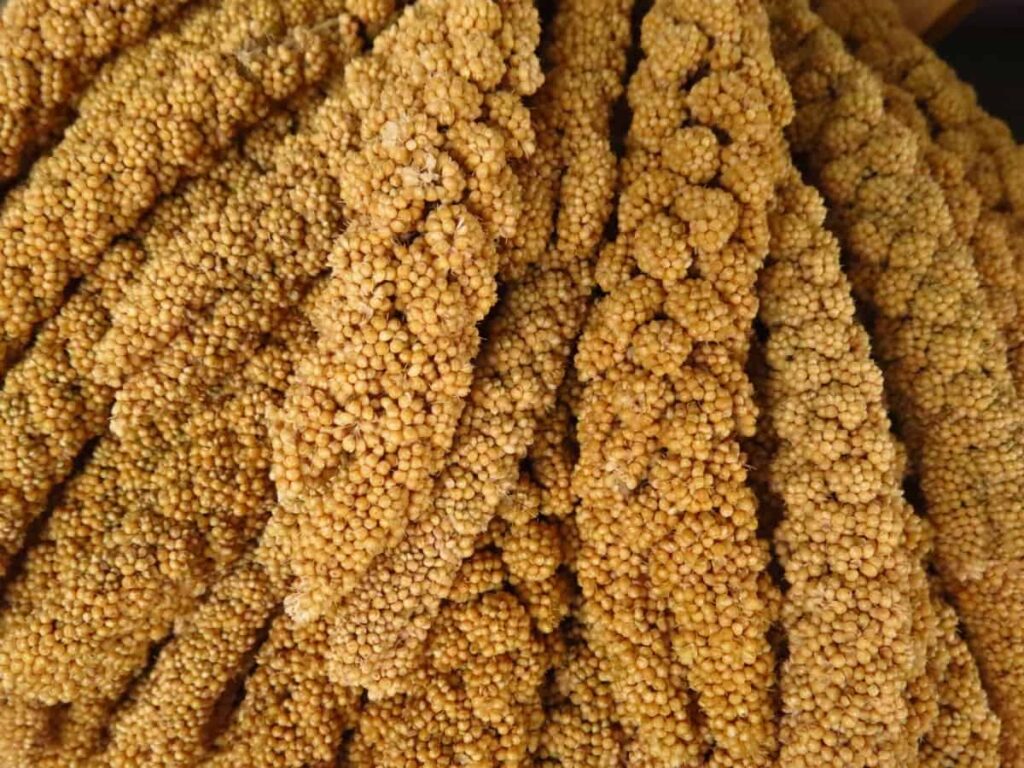
It also covers the financial aspects of millet farming, including budgeting, pricing, and maximizing profits. Following the steps in this guide, you can start a successful millets farming business that brings in money, improves food security, and makes farming more sustainable.
Millets Farming Business Plan
What is Millets Farming?
Millets are a group of small-seeded grass plants grown worldwide as cereal crops for human and animal consumption. They belong to the tribe Paniceae and are favored in the semiarid tropics of Asia and Africa due to their productivity and short growing season under dry, high-temperature conditions. The most commonly grown millets are sorghum and pearl millet, important crops in India and parts of Africa.
Other important millet species include finger, proso, and foxtail millet. Millets are annual warm-weather cereals highly tolerant of extreme weather conditions, making them an ideal crop for regions with a limited water supply. They have the same amount of nutrients as other major cereals and may have been a key factor in the rise of farming societies with more than one crop.
Nutrient composition of Millets
- Millets are cereal grains, similar to rice and wheat, but with higher nutrient composition.
- India’s major millets include Sorghum (Jowar), Pearl millet (Bajra), and Finger millet (Ragi).
- Millets are a natural source of zinc, iron, calcium, and other nutrients.
- Millets have a higher folic acid, calcium, iron, potassium, magnesium, and zinc content than rice and wheat.
- Finger millet is the high source of calcium among millets, with a range of 300-370 mg per 100 grams.
- Millets benefit people with diabetes, as they have a lower glycemic index than rice and wheat.
- Millets are also gluten-free, making them good for people with cardiac disease or gluten sensitivity.
- Millets are environmentally sustainable crops, requiring less water and fertilizer than rice and wheat, making them a good option for farmers practicing sustainable agriculture.
Trends of Millet Farming in India
- Millet yield in India has more than doubled since 1966, with an average yield of 1208 kgs per hectare in 2021-22.
- Despite a consistent decrease in millet cultivation area since 1971-72, production has increased by 7% since 1966.
- Better farming practices have consistently improved millet yield estimates over the years.
- India’s millet production has shown an erratic trend since 1966, with no significant improvements in the last two decades.
- The per capita availability of millet has fluctuated, with 12.3 kgs of millet available per person in 2021.
- Sorghum cultivation area has decreased by 76% since 1966, while production for Pearl millets has increased by over 6 million tonnes.
- Pearl millet contributed 58% to the total millet production in 2021-22, followed by Sorghum (29%) and Finger millet (10%).
- Despite a lower share of area and production, Finger millet has yield estimates on par with Pearl millet, at nearly 1436 and 1401 kg/ha, respectively.
In case you missed it: A Step-by-Step Guide to Creating a Successful Mixed Farming Business Plan
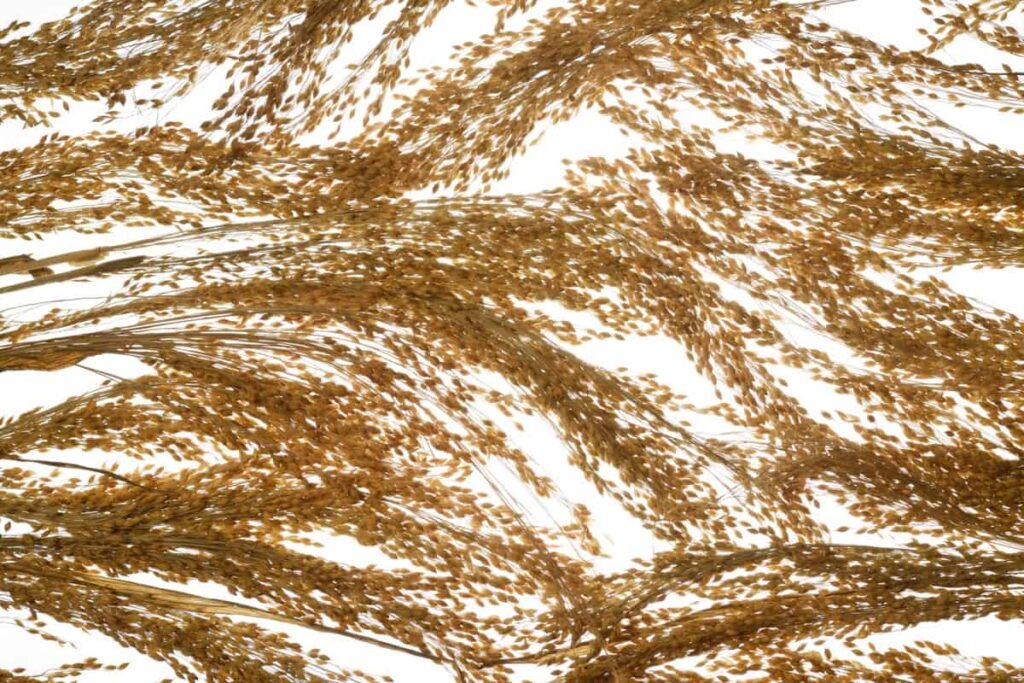
Best Agronomic Farm Practices for Millets Farming Business
Preparation of land: Millet can be cultivated in different soil types, although it thrives on wet soils. The field should be plowed once or twice before being harrowed to achieve an excellent tilth.
Method of sowing: Millet is sown in three ways: (1) on a flat surface, (2) with the ridge and furrow system, or (3) with the broadbed and furrow method. The seed should be planted at a 2.5 cm – 3 cm depth.
Time of sowing Sowing: kharif Millet harvesting should begin with the arrival of the monsoon, which occurs in the north and central portions of the country during the first two weeks of July. In Tamil Nadu, the rabi season begins in the first two weeks of October. If there is a sparse population, fill the gaps by transplanting seedlings after 2-3 weeks of sowing. Dry sowing before the first rains of the monsoon season is suggested. Summer millet should be sown from the 4th to the 5th Standard Meteorological Week (SMW) or from the final week of January to the first week of February to maximize output in zone B.
Seed treatment: Seed treatment with biopesticides (Trichoderma harzianum at 4g kg-1) or thiram 75% dust at 3 g kg-1 seed will aid in the control of soilborne illnesses. Smut disease is controlled by seed treatment with 300-mesh sulfur powder at 4 g kg-1 seeds. They are treated in a 10% salt solution to remove ergot-affected seeds—downy mildew is controlled by seed treatment with metalaxyl (Apron 35 SD) @ 6 g kg-1 seed. To increase nitrogen and phosphorus availability, seeds are treated with Azospirillum (600 g) and Phosphobacterium.
Seed rate and spacing: The suggested seed rate for millets in the arid-western region is 3 kg/ha planted in rows 60 cm apart, with a low plant population of 1.00 to 1.25 lac/ha. Plant the crop at 45 x 10-15 cm spacing in areas with more than 450 mm of rainfall (zones A & B), with a population of 1.75 to 2.0 lakhs/ha.
Plant population: Under typical conditions, the recommended plant stand for millet is 180,000 plants ha-1 or 72,000 plants acre-1. A population of 225,000 ha-1 (100,000 plants acre-1) is indicated under irrigation or high levels of management on highly productive soils. A population of roughly 90,000 ha-1 (40,000 plants acre-1) is desirable on excessively sandy, droughty soils.
Nutrient management: For both solo millet and intercropping systems, it is recommended to apply 40 kg N + 20 kg P2O5/ha in arid regions and 60 kg N + 30 kg P2O5/ha in semiarid regions. Just half of the recommended nitrogen dose should be administered during seedbed preparation on light soils to prevent leaching. The remaining half should be side-dressed when the crop is 25 days old. All of the nitrogen can be provided on black soils during seedbed preparation. Azospirillum and PSB biofertilizers can reduce N and P fertilizer applications. Zinc deficiency can be remedied by applying 10 kg ZnSO4/ha, and a spray of 0.2% ZnSO4 is recommended from tillering to pre-flowering.
In case you missed it: Growing Jowar (Sorghum) Organically in Maharashtra: Step-By-Step Cultivation Process and Production
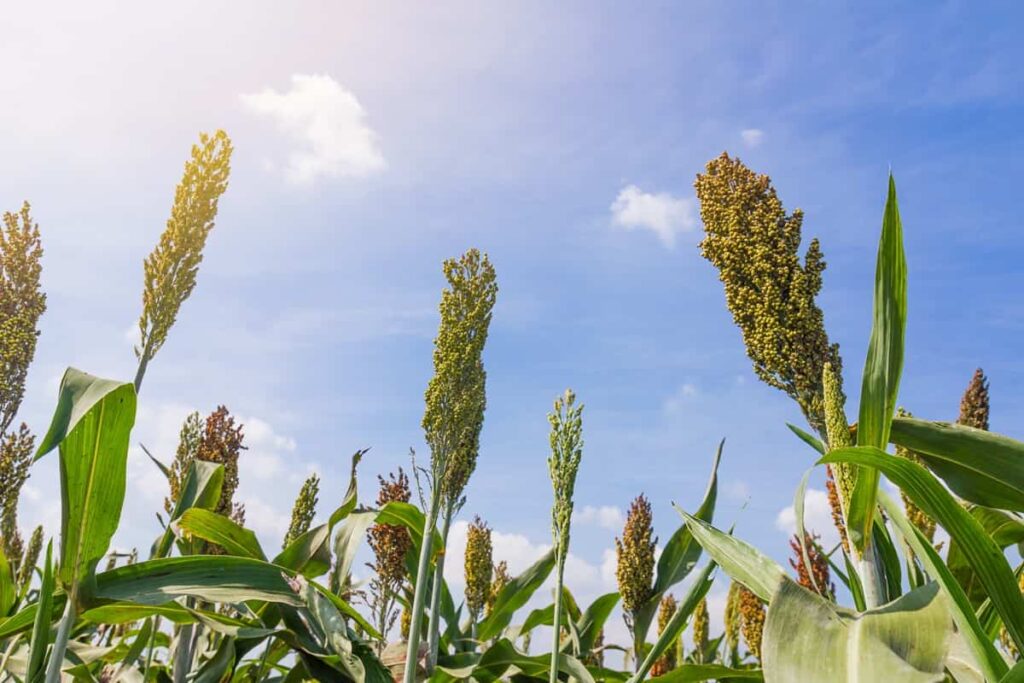
Inter cultivation and weed control: Weed Control Between Plantings Two hoeings and weedings at 15 and 30 DAS are adequate to effectively control weeds, comparable to herbicidal weed control with the pre-emergent treatment of atrazine @ 0.5 kg/ha overlaid with one hand weeding. The second weeding aids in soil moisture conservation.
Millet-based cropping systems in Kharif: Cropping Systems Based on Millet in Kharif A cultivar rotation should be used to avoid downy mildew disease. In alternate years/seasons, millet hybrids and open-pollinated varieties should be employed. Growing the same hybrid or open-pollinated type in the same area is not advisable indefinitely.
Irrigation: If water is available during protracted dry spells, irrigation should be provided at crucial crop growth stages such as tillering, flowering, and grain development. In the summer, millet should be watered regularly (0.75-1.0IW/CPE with 40 mm) according to crop needs.
Harvesting: It is the optimal time to harvest pearl millet when the plants reach physiological maturity, indicated by a black mark at the bottom of the grain in the hilar region. The grains become hard and stiff, and the leaves turn yellowish. The earheads are usually clipped first, followed by the stalks. Grain with a moisture percentage of 14% or less is considered dry, and grain moisture content should be less than 12% for long-term storage (greater than six months).
Major insect pests: The major insect pests of pearl millet are white grubs, shoot flies, grasshoppers, termites, grey weevils, earhead bugs, stem borers, and hairy caterpillars.
Major diseases: The major diseases of pearl millet are downy mildew, rust, smut, ergot, and blast.
Innovative Millet Business Plan
- Millet primary processing unit: This plan involves processing millet to remove the husk layer to make it suitable for human consumption. It requires at least three machines, and the cost of establishing the unit varies depending upon the capacity of the machines.
- Millets value addition: Value addition involves taking a raw commodity and changing its form to produce a high-quality end product. Value addition of millets is required to meet the taste and preferences of consumers, reduce post-harvest losses, enhance nutrient content, reduce cooking time, and diversify millet products.
- Millet seed entrepreneurs: This plan is for farmers who want to produce quality millet seeds. Good quality minor millets seeds can increase the production and productivity of millets. Farmers can also join the Government Seed Production Programme to produce quality seeds.
- Millets aggregators: This plan involves aggregating millets in the warehouse for supermarkets and the food industry. Large quantities of millet can be purchased and kept in the warehouse and can fulfill the needs of the food industry when needed.
- Millets packaging for supermarkets and the retail industry: This plan involves packing and supplying processed millets to retail and supermarkets. Retailers are dedicating separate aisles and shelves to millet-based products, and putting products on display generates more sales and revenue.
- Millet bakery industry: This plan uses millets to bake biscuits and cakes. Establishing a millet bakery unit requires three machines: a planetary mixer, cookie-cutting machines, and rotary convection oven. Millet biscuits and cakes can be a healthy choice for health-conscious consumers.
In case you missed it: Growing Pearl Millet/Bajra Organically in Rajasthan: Step-by-Step Farming Practices and Production
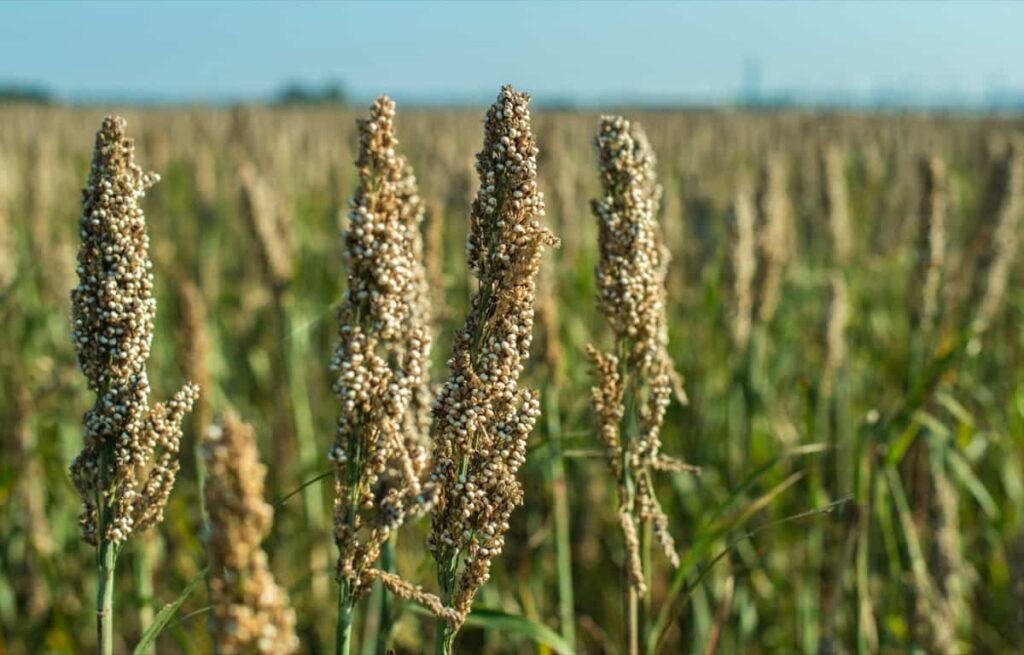
Millet Farming Business Plan
Starting a millet farming business can be profitable if the proper planning and management strategies are in place. A Millet Farming Business Plan is a document that outlines the strategies, goals, and financial projections for starting and managing a millet farming business. It includes market analysis, products and services, marketing and sales, financial projections, management team, operations plan, and risk assessment.
Executive Summary of Millet Farming Business
The Millet Farming Business Plan aims to establish a profitable millet farming business offering highly nutritious and gluten-free products. This business plan outlines the market analysis, products and services, marketing and sales, financial projections, management team, operations plan, and risk assessment. The proposed business will focus on sustainable and environmentally friendly farming practices, offering customers healthy and affordable millet products.
Market Analysis of Millet Farming Business
The millet farming business is promising and can yield high farmer profits. With the increasing demand for millet-based products due to their health benefits, there is a growing market for millet crops. Additionally, millet is a drought-resistant crop, making it a viable option in areas with low rainfall. However, competition from other crops and fluctuations in prices can affect profitability. Farmers must research market trends, establish reliable buyers, and invest in efficient production methods to succeed.
In case you missed it: A Guide to Sustainable RAS Fish Farming Practices
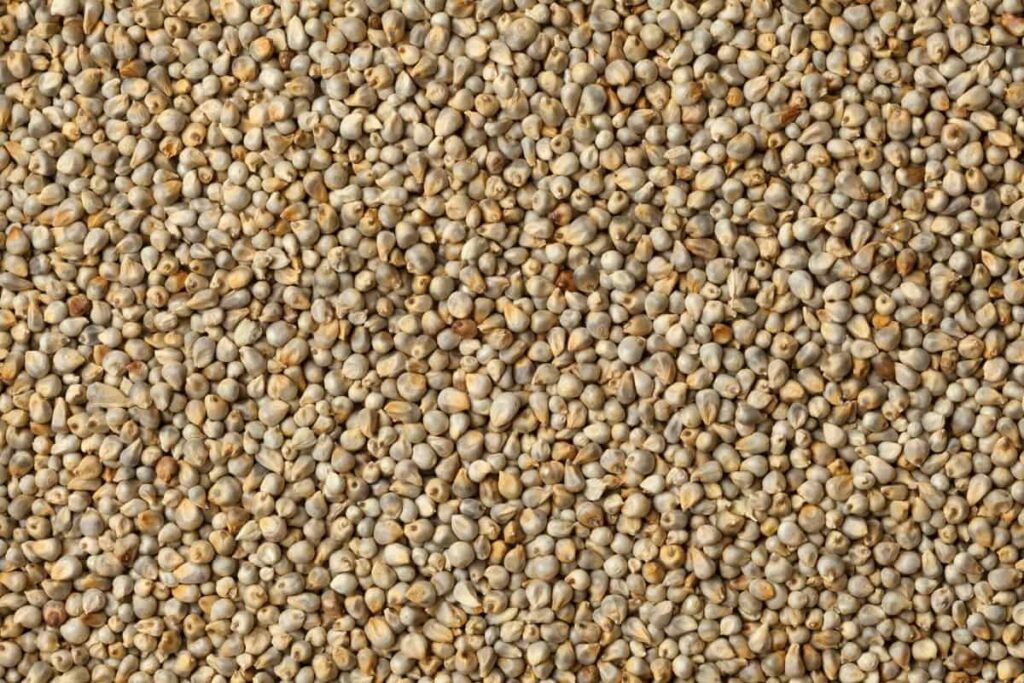
Marketing and Sales in Millet Farming Business
Farmers must identify potential buyers, establish relationships, and effectively promote their products. This can be achieved through various channels, including online platforms, local markets, and food processing companies. High-quality millet crops, competitive pricing, and timely delivery can help farmers build loyal customers. Additionally, investing in branding and packaging can make the products more attractive to consumers.
Financial Projections for Millet Farming Business
Financial projections for a millet farming business can vary depending on crop yield, market demand, production costs, and pricing strategy. On the other hand, a well-run millet farming business can make anywhere from thousands to lakhs in profits every year if it has good production methods and a good sales plan.
Operations Plan for Millet Farming Business
An operations plan for a millet farming business outlines millet crops’ daily production and sale. This can include land preparation, planting, irrigation, fertilization, pest control, harvesting, processing, and packaging. Farmers must establish efficient processes, manage resources effectively, and maintain quality standards to ensure a successful operation.
Risk Assessment for Millet Farming Business
As with any agricultural business, millet farming comes with inherent risks. These include weather fluctuations, pest infestations, crop disease, and market volatility. Farmers can mitigate these risks through careful planning, crop insurance, diversification of crops, and establishment of multiple buyer relationships. Adequate knowledge of farming practices and access to technology can also help minimize risk.
In case you missed it: Growing Requirements of Kale: Good and Bad Companion Plants of Kale
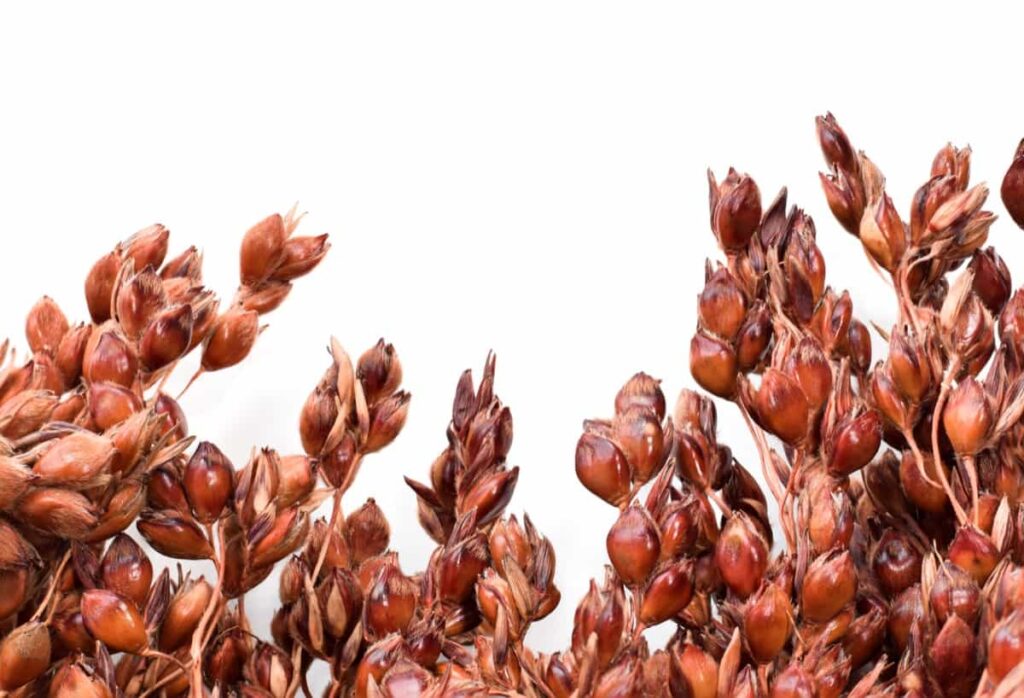
Conclusion
A successful millet farming business requires careful planning, efficient production methods, and effective marketing and sales strategies. Farmers can maximize profits and contribute to the growing demand for healthy, sustainable crops with accurate financial forecasting, risk assessment, and dedication.
- Management Pests and Diseases in Your Cotton Field
- Sheep Farming Business Plan for Beginners
- Aquaponic Farming at Home: A Step-By-Step Guide
- Profitable Village Farming Business Ideas in 2024
- High-Yield Aquaculture: Fast-Growing Fish for Farming
- Effective Fish Pond Construction Techniques for Beginners
- Irrigation and Water Management in Pineapple Farming
- Blossom to Harvest: Mastering Flowering and Pollination in Papaya Farming
- Pig Fattening Essentials: From Selection to Sale for Beginners
- Raising Wagyu Cattle: A Complete Guide for Premium Beef Production
- Soil Types and Their Water Holding Capacity
- Optimizing Irrigation Schedules for Coconut Groves for Enhanced Yield
- Espresso Your Garden: Coffee Grounds for Healthier Acid-Loving Plants
- The Best Soil Mix for Snake Plants: How to Mix Your Own Snake Plant Soil
- Green Thumb Success: Expert Tips for Cultivating Greenhouse Beans All Year Round
- Bloom All Year Round: The Ultimate Guide to Indoor Hyacinth Care
- Eco-Friendly Gardening: How to Make Liquid Fertilizer from Kitchen Waste
- Ultimate Guide to Grow Anise in Pots: Explore Seed Propagation to Harvesting
- Guide to Raising Chester White Pigs: Discover Breed Facts to Growth Management
- Mastering the Elegance: The Ultimate Guide to Weeping Cherry Tree Care, Planting, and Maintenance
- Ultimate Guide to Planting Garlic in Grow Bags: Growing Strategies for Beginners
- How to Fix Spider Plant Leaf-Related Problems: Natural and Organic Remedies
- 10 Reasons Why Your Tulsi Plant is Shedding Leaves: Home Remedies and Solutions
- Optimizing Growth and Yield: The Advantages of Palm Bunch Ash Fertilizer
- Utilizing Neem Oil Extract as a Natural Pesticide for Hydrangea
- From Soil to Harvest: Various Ways in Which Farmers Can Use AI Tools
- Steps to Encourage and Induce Citrus Flowers: A Comprehensive Guide
- How to Fix Snake Plant Leaf-Related Issues: Natural and Organic Remedies
- Transform Your Garden into a Fragrant Oasis with Raat Ki Rani (Night Blooming Jasmine)
- Discover the Ideal Chicken Breeds for Philippine Farms
- How to Create a Poultry Egg Farm Business Plan for Profits
- Grow Lemon Cucumbers Like a Pro: Insider Techniques for Bountiful Yields
- Ultimate Guide to Caring for Your Pink Princess Philodendron: Tips for Thriving Variegation
- Areca Nut Profit Per Acre: Calculating Yield and Cost of Cultivation
- How Kaveri Chicken is Becoming a More Profitable Breed in Indian Backyards
- Transform Your Barn: 9 Steps to Convert a Horse Stall into a Chicken Coop
